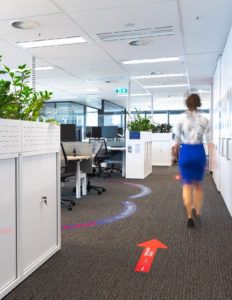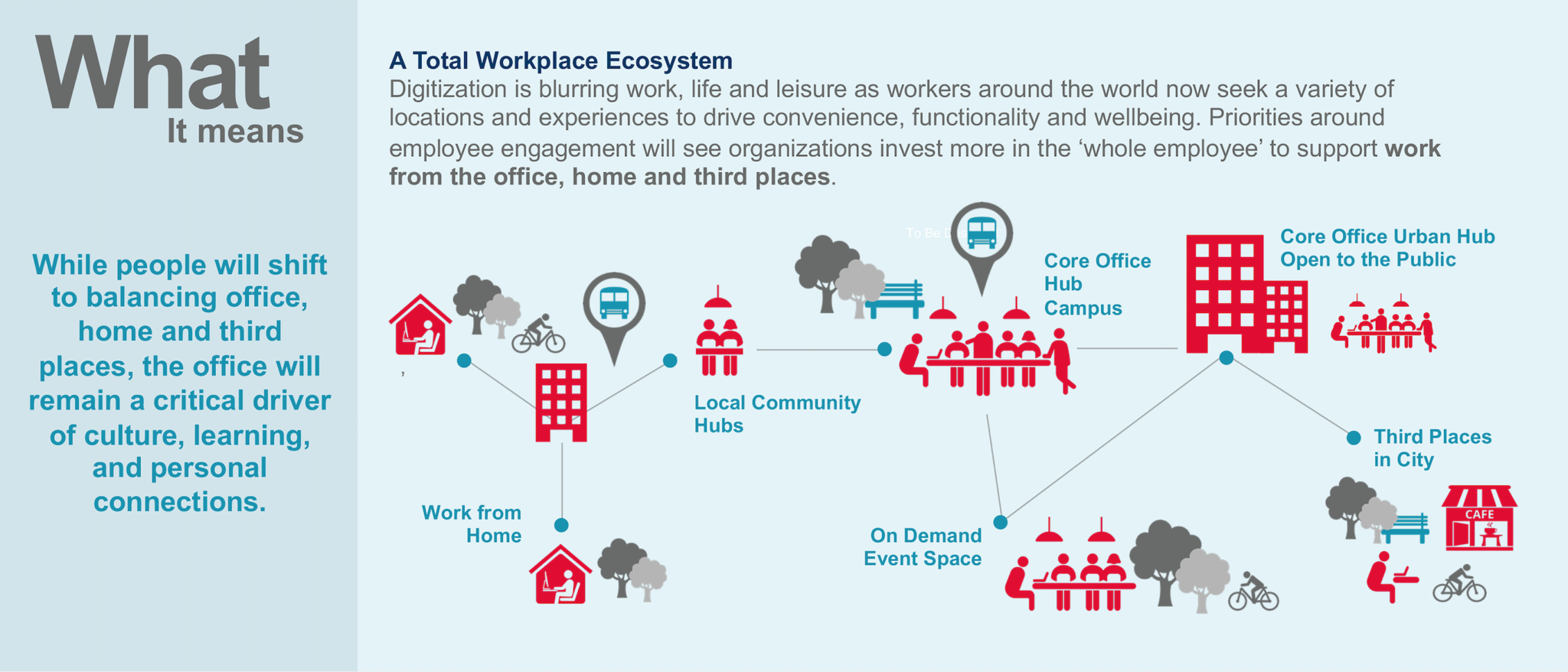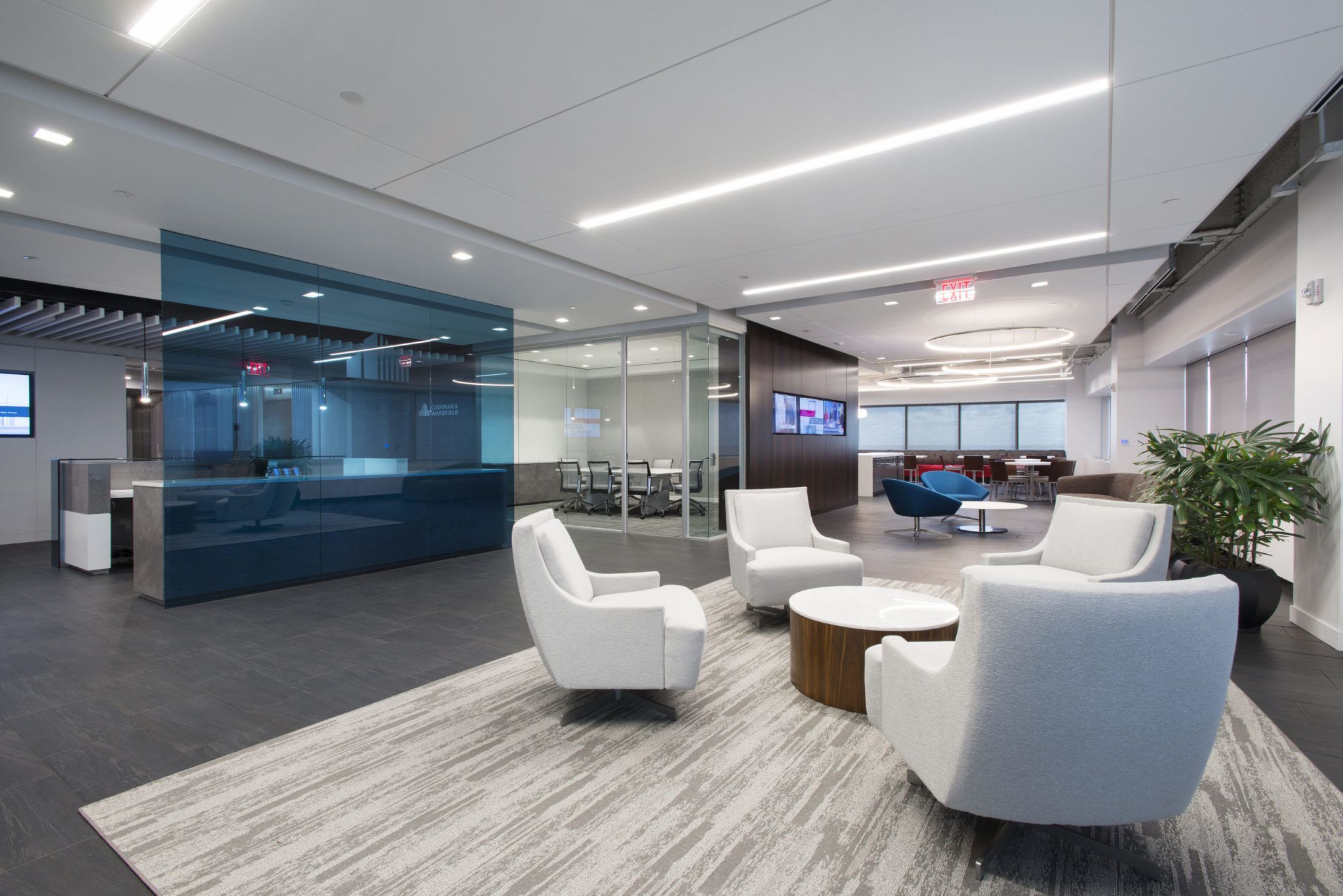Certain phrases surrounding the COVID-19 pandemic have sparked global conversations, the most notable being “social distancing.” The world now understands the importance of staying 6 feet away.
In the June issue of TBBW, we discussed what the new normal for Tampa Bay’s office market might look like and featured the Cushman & Wakefield Six Feet Office model. Across the globe, we’re in different stages of experiencing the pandemic. But, as we begin visualizing the future of workplace, we may begin to embrace another potential new normal – A Total Workplace Ecosystem.
 Through its proprietary Experience per Square Foot tool, Cushman & Wakefield has captured more than 2.5 million data points from workers all over the globe in the pre-COVID-19, era and a further 1.7 million data points from more than 50,000 respondents in the current work-from-home environment. Our workplace specialists analyzed this data to develop a report on the future of workplace, which gives you an inside look at the unrivaled insights into how employees are coping right now—identifying their key successes and critical challenges. With this data, Cushman & Wakefield has developed a detailed report that provides insight into the future workplace.
Through its proprietary Experience per Square Foot tool, Cushman & Wakefield has captured more than 2.5 million data points from workers all over the globe in the pre-COVID-19, era and a further 1.7 million data points from more than 50,000 respondents in the current work-from-home environment. Our workplace specialists analyzed this data to develop a report on the future of workplace, which gives you an inside look at the unrivaled insights into how employees are coping right now—identifying their key successes and critical challenges. With this data, Cushman & Wakefield has developed a detailed report that provides insight into the future workplace.
Here, we share some of the key learnings from this report with the Tampa Bay business community:
FLEXIBILITY
• Employees want flexibility: 73 percent of the workforce believes their company should embrace some level of working from home.
• Employees feel trusted: 90 percent of employees feel their employers trust them to work remotely.
POTENTIAL NEW NORMAL
• There will be a variety of locations: The workplace might no longer be a single location but an ecosystem of different locations, and experiences, to support convenience, functionality and well-being.
• The office isn’t going anywhere: Offices will continue to thrive, but in new ways. Allowing for less office-based headcount will assist with social distancing measures and might create a balance that will likely not affect current footprint sizes.
• The office might have a new purpose: The purpose will be to provide inspiring destinations that strengthen cultural connection, learning, bonding with customers and colleagues, and foster creativity and innovation.
While it is important to understand flexibility, and the potential new normal, it is equally important to consider and learn from the challenges. Although a rather cliched expression, this current state of work is truly the world’s largest work-from-home experiment.
FOCUS ON WELL-BEING
Some things haven’t changed: A constant between pre-COVID-19 and the current environment is that people still struggle with “renewal,” or the ability to remain energized throughout the day, which continues to be the weakest experience outcome in our survey. In addition, while there has been a marginal improvement in renewal during the pandemic, overall well-being is suffering not because of a struggle to maintain work life balance, but rather the lack of time away from work.
Missing the daily commute: One factor affecting the lack of time away from the office might be the absence of a daily commute. This absence means there is no natural break at the start and end of the working day to provide the ability to switch off, negatively impacting mental and physical well-being.
Blurred lines: When the home is where all work takes place, the sense of physical separation from work has evaporated.
LOSS OF CONNECTIONS
Personal: Although team collaboration has been a success, the move to remote working has influenced people’s ability to connect with one another on a more personal level.
Colleagues: XSF@home measures “bonding,” or a sense of personal connection employees feel to one other. Only a little more than half of respondents feel connected to their colleagues. The ability to have a strong connection among colleagues is an extremely important component of employee experience, under any circumstances, and even more so in the current environment.
Culture: Connection to culture is manifested both consciously and sub-consciously in the office through face-to-face employee interactions, which increases bonding and connection to the company. The results of XSF@home show that personal connection to culture is one of the lowest scoring indicators in relation to current employee experience.
Even though employees report high levels of pride working for their companies, and they like their company culture, it is hard to maintain a sense of personal connection and belonging to that culture when not nurtured and “lived” in person. Similarly, while collaboration has become more effective, it is task-oriented collaboration and not the kind that creates opportunities for informal learning and mentoring. Organizations that find ways to overcome the challenge of maintaining, and renewing, personal bonds in the current environment will experience significant benefits in the form of employee experience, engagement and well-being.
 WHAT’S NEXT?
WHAT’S NEXT?
The key takeaway from the current work-from-home experience is that organizations might embrace more remote working in the future. In doing so, it is imperative to recognize that the workplace might no longer be a single location, but an ecosystem of a variety of locations and experiences to support convenience, functionality and well-being. In doing so, we can reimagine the way we work and leverage location, time and technology to drive improved people, places and business performance.
The information provided in this article is supplied by The Future of Workplace, a Cushman & Wakefield report. You can download the full report by visiting cushmanwakefield.com. Scott Garlick is the Tampa Bay managing principal for Cushman & Wakefield and can be reached at [email protected].













